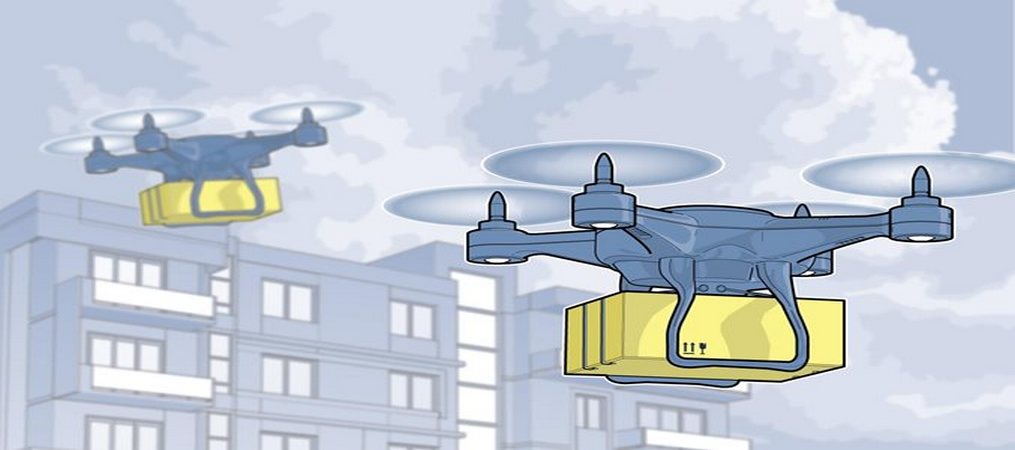
Air-mobility solutions: What they`ll need to take off
Innovators are designing air taxis and delivery drones. But these won’t take flight unless stakeholders accelerate investment in air-mobility infrastructure.
Traffic congestion forces US drivers to waste more than three billion gallons of fuel and keeps them trapped in their cars for almost seven billion extra hours each year. Much of that time might involve dreaming of a trip to work that does not involve staring at taillights on the expressway. Could we reduce long drives by transporting people with large drones tailored for passenger transport? Air-mobility solutions could also improve the transportation of goods. Can we deliver prescription drugs within 20 minutes to elderly people who lack transportation or provide medevac services to remote locations? And what about sending groceries or food to areas with few stores?
Start-ups, high-tech giants, and others have already begun investing in the innovative technologies needed to make such delivery and transport drones a reality. But the wider use of air-mobility solutions also requires other enablers. Potential drone operators need to develop strong business cases that attract investors. Regulators will play a critical role in setting comprehensive guidelines for everything from vehicle requirements to airspace management. Industry stakeholders must educate the public to address core concerns about air mobility, including safety. Another important enabler one that is often overlooked involves infrastructure, a broad category that includes places where drones take off and land.
It’s easy to understand why infrastructure has received minimal attention. Air-mobility solutions themselves are so technically complex, and their potential use cases so fascinating, that they tend to command the most attention. But now, many companies and private investors have begun exploring the infrastructure assets required to make air mobility a reality. Companies that have engaged stakeholders in a dialogue about infrastructure include Amazon, which recently patented a flight-management system, and Uber Technologies, which has tried to determine the costs and requirements for various infrastructure assets including the vertiports that will serve electric vertical takeoff and landing (eVTOL) aircraft. On the government side, it seems that interest in infrastructure is also growing, with some public agencies investing in the development of air-mobility infrastructure for drone use cases. They’re also investigating how these systems can be integrated with the existing air-traffic-management system.
When companies and other stakeholders invest in infrastructure assets, they often face questions about their necessity, since air-mobility solutions still have many other hurdles to overcome. Wide availability of delivery drones is not expected for three to ten years, and it may be even longer before passenger-transport drones are deployed at scale. But the timelines for designing, constructing, and obtaining space for infrastructure, including vertiports, are also long, such that companies should begin planning now. If they hold back until air-mobility solutions are ready to hit the skies, their drones will be the aerial equivalent of a bridge to nowhere: expensive technologic marvels that serve no purpose.
To help investors, private companies, and the public sector avoid this outcome and quickly capture potential benefits once the technologies are ready, we identified infrastructure requirements in the critical US market. These include traffic-management infrastructure, physical infrastructure for receiving packages or landing vehicles, and supporting technology infrastructure, such as automatic doors for admitting drones into warehouses.
UTM-development and airspace-management challenges
For UTM to function, air-mobility solutions must be equipped with critical technologies, such as detect and avoid systems and navigational tools for environments where GPS does not function all of which will require significant investment and testing. Regulatory compliance will also present hurdles because, understandably, the industry must be prepared to address safety concerns for both passengers and people under the path of drone flights.
Some air-mobility solutions, including freight delivery drones and passenger-transport eVTOLs, must fly in the airspace commonly used by manned commercial flights and general aviation aircraft. That means stakeholders cannot create UTM in isolation; instead, they must develop an integrated airspace-management system one that can help air mobility solutions avoid obstacles in any airspace and that can comply with multiple systems that govern flight rules. Such connections may be technically challenging, since today’s airspace relies on robust traffic management systems, as well as highly trained pilots and air-traffic controllers who navigate within different levels of the national airspace and eliminate any conflicts within these zones. By contrast, most future UTM solutions will automate many tasks, with human intervention limited to emergencies.
To date, UTM development has been a joint public and private sector endeavor. For instance, the Federal Aviation Administration (FAA) formed a partnership with UAS stakeholders to create the Low Altitude Authorization and Notification Capability program, which provides UAS with access to controlled airspace near airports by processing airspace authorizations at low altitudes in near real time. In the future, however, some private companies may try to gain an edge by creating UTM solutions for specific geographic areas. If that materializes, air-mobility solutions, including small UAS and eVTOLs, would have to interact with a variety of competing UTM solutions as they travel to different areas, rather than a single system.
Stakeholders would have to ensure that all UTM systems were interoperable and could communicate with each other, as well as with the air-traffic-management system.
McKinsey